Existing 2 portrait (2P) configuration trackers have gaps that may be a cause for concern for some customers. To address these concerns, TrinaTracker designed the second-generation Vanguard 2P to offer an unparalleled and unchallenged solution that maximizes the installation capacity at any site. Read more to explore how the Vanguard 2P second-generation tracker can address concerns like:
Concern 1: Installation Cost
Concern 2: Adaptation to Uneven Terrains
Concern 3: Wind-Related Risks
Concern 4: Ability to Maximize Efficiency on the Field
Concern 5: Ability to Achieve Maximum Power Generation
Concern 6: Monitoring Capabilities
Concern 7: Operation & Maintenance Cost
Concern 8: Noise Pollution
Concern 9: Certification of Products
Concern 1: Installation Cost
The new-generation Vanguard 2P offers a cost-effective solution that maximizes customer value. Each Vanguard 2P tracker reduces foundations by 23% and lowers costs associated with piles as it only requires 7 W piles per tracker, equivalent to 106 piles per megawatt (MW).
It also comes with TrinaTracker’s proprietary spherical bearing, which can reduce bearing installation costs by 50% - equivalent to a 16% reduction in installation per MW, or US$29 saving per MW.
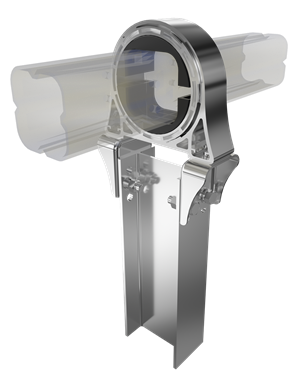
TrinaTracker’s patented Spherical Bearing
Concern 2: Adaptation to Uneven Terrains
Thanks to the spherical bearing, uneven and undulating terrains also pose no challenge for the Vanguard 2P. With 30% angle adaptability and automatic rotation, the patented spherical bearing can easily achieve perfect alignment without calibration. This further reduces labor costs associated with installation.
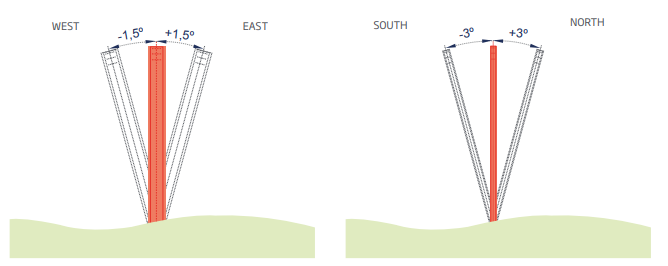
Slope tolerance west-east (left) and south-north (right)
Concern 3: Wind-Related Risks
As large-format modules become the mainstream choice for the solar industry, trackers must have high rigidity to ensure stability in high wind loads. The new-generation Vanguard 2P tracker utilizes a 0-degree stow position to minimize the wind load on the solar modules and structure.
It also adopts a multi-drive system, which lowers torsional fluttering and comes with a self-locking function that ensures maximum wind stability.


Torsional fluttering shown in green and blue for single drive (top) vs multi-drive (bottom)
The new Vanguard 2P also comes with integrated wind alarm management and 20% faster positioning to stow position compared to its predecessor, avoiding any damage from high winds. For instance, the new Vanguard 2P will only take up to 7 minutes to return to stow in wind speeds exceeding 60 km/h.
Together, these features make the Vanguard 2P tracker one of the most rigid and stable trackers in the industry, as ratified in the comprehensive wind tunnel test completed by leading wind consultancy RWDI.
Concern 4: Ability to Maximize Efficiency on the Field
The Vanguard 2P has undergone rigorous indoor and outdoor testing to ensure high efficiency in the field. These tests include:
- High load test on different components, such as torque tubes and purlins

- Fatigue and dynamic test to determine durability and dynamic performance

- Complete transmission test to evaluate system consumption in different site conditions

- IEC accelerated test to simulate the tracker condition after 25 years
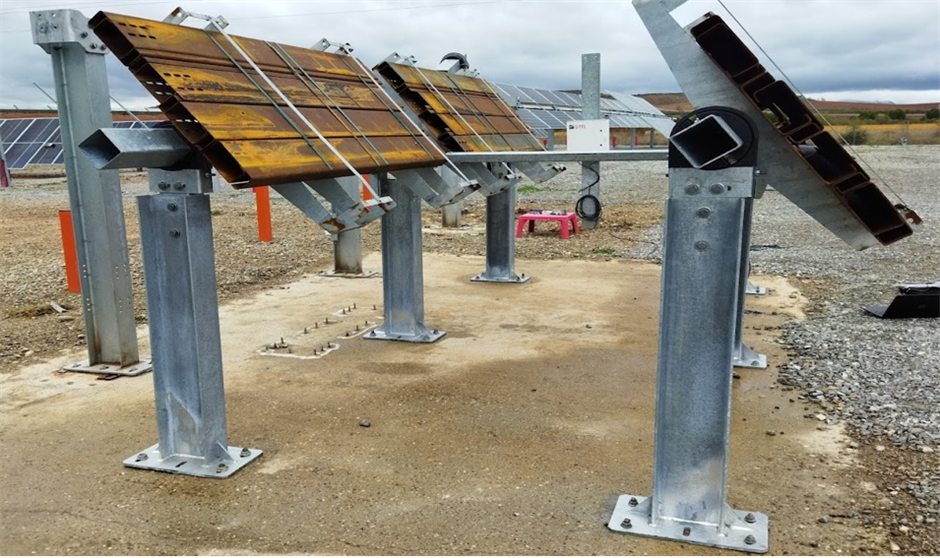
- Comparative production test to define the best configuration for the highest consumption

Concern 5: Ability to Achieve Maximum Power Generation
To achieve the best angle for maximum power generation, the upgraded Vanguard 2P tracker employs 4 controllers and 4 motorized actuators to ensure perfect angle positioning across the whole tracker length. This ensures a 0.2-degree margin for the optimal tilt angle.
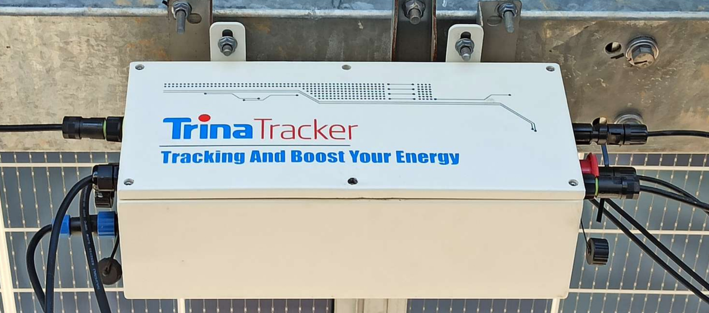
TrinaTracker Smart Controller
Concern 6: Monitoring Capabilities
Each tracker includes 1 master Tracker Control Unit (TCU) and 3 slave TCUs. Together, they ensure accurate failure detection and easy synchronization of the motor speed and positioning.
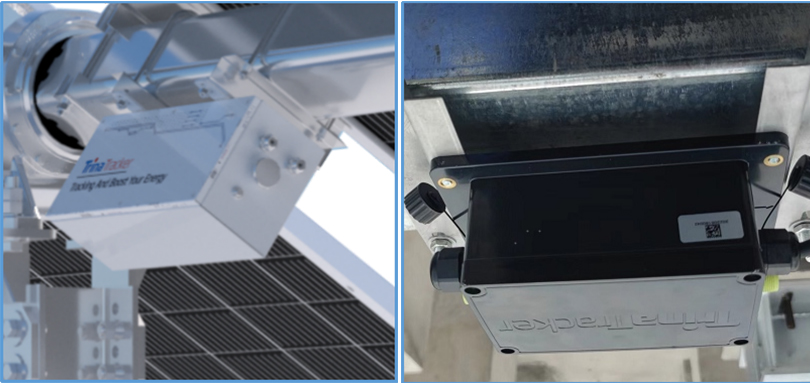
Master TCU (left) and Slave TCU (right)
In short, monitoring becomes more comprehensive in the new-generation Vanguard 2P.
Concern 7: Operation & Maintenance Cost
The new-generation Vanguard 2P comes with fewer mechanical components to minimize maintenance costs associated with mechanical wear and tear. Compared to its predecessor, the new-generation Vanguard 2P comes with 15% fewer components, translating to 40% time saved on O&M. There is also a 90% reduction in pile damage and a 10% reduction in ramming failure.
Concern 8: Noise Pollution
The new-generation Vanguard 2P removed mechanical components such as the cardan and transmission bar. Fewer mechanical components in the Vanguard 2P means lower friction and less noise. This, paired with motors of lower power and a more efficient distributed drive system, reduces the noise generated by the new Vanguard 2P by 15% compared to its predecessor.
Concern 9: Assurance for Quality & Reliability
The new-generation Vanguard 2P has received IEC 62817 certification provided by CERE, an independent Testing, Simulation, Certification, and Inspection body.
Customers can also achieve peace of mind with the assurance of Trina Solar’s high bankability. TrinaTracker is backed by parent company Trina Solar, one of the oldest solar companies with one of the largest annual solar module production capacities. As a top solar brand, Trina Solar also regularly tops the Bloomberg solar manufacturer ratings, and is the only module manufacturer to be rated as 100% bankable for 7 consecutive years.
Want to learn more? Watch the global launch of the Vanguard 2P second-generation tracker, or contact TrinaTracker today to get this solar tracker.






